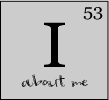I had a long summer reading list and modeled the behavior of a veracious reader. But she plodded through these pre-teen dramas with all the enthusiasm of a teeth cleaning.
Then right before school started, we were working at Mayo and Mike rescued a set of Science Encyclopedia's from a dumpster. He brought them home and she squealed with delight. She sat in her room looking and READING about whales, dolphins, spiders, snakes and lightning. I had to ask her to turn out the light and go to sleep. "Stop reading!" I said. "It's past your bedtime!"
It turns out that non-fiction is what she likes. She can't get enough of these volumes of science. Each morning she would pepper me with facts about spiders, or dolphins or how a thunderstorm forms. She became a veracious reader...finally!
Then on Wednesday night, I was tucking her in and she was reading the encyclopedia, again, when she asked if I could possibly read this paragraph to her and explain what it meant. "It has some big words in it that I can't sound out and that I don't understand". I said, "of course dear, let me see the book".
This was the passage she needed help with.
Earthworms are hermaphroditic. They contain both male and female cells. During reproduction, two worms come together in opposite
directions with their clitellums in contact with
their mating partner The clitellum produces a mucus which holds
the two worms together for sperm exchange. Sperm are made in the
seminal vesicles, which are large organs on either side of the esophagus. After the sperm exchange the worm backs out of the mucous tube and it passes over the organ that releases the eggs. The mucus tube now contains both sperm and eggs. The earthworm wiggles out of the sac and the cocoon remains in the soil for about three weeks when a new earthworm hatches from the cocoon.
Mom, what does "hermaphroditic" mean?
The last big word Emma Jane learned was anthropomorphizing. You can read about how she worked that word into conversation here. Therefore, I am a little reluctant to have her learn this word at nine years old.
No good can come from this...except maybe a few good stories.










Great for Emma Jane! My college roommate who teaches reading teachers at Syracuse likes to remind me that even kids who are reading well on their own should still be read to, for all the reasons above. AND she reminds me that most girls read more fiction than non-fiction and it's good to have a balance, so don't let Emma Jane get away without fiction. Just steer her toward the fiction about girls who like to read the Encyclopedia...
ReplyDeleteYou are so right! And we have about one hundred fiction books waiting for her to devour them...soon I hope.
Delete